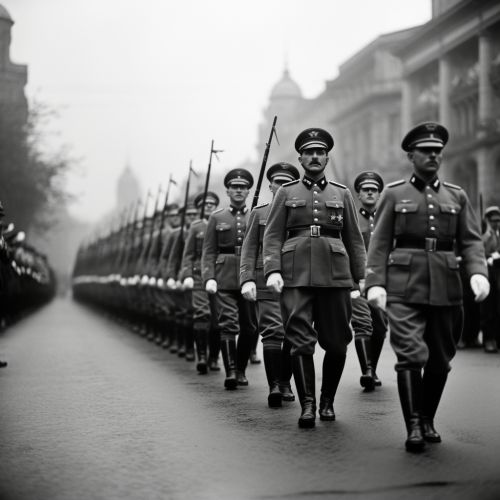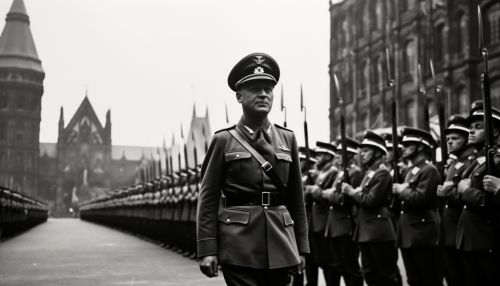Heer (Wehrmacht)
Origins and Early History
The Heer was the land forces component of the Wehrmacht, the regular German Armed Forces, from 1935 until it was demobilized and later dissolved in August 1946. The Wehrmacht also included the Kriegsmarine (Navy) and the Luftwaffe (Air Force). The Heer was first established in the wake of Germany's rearmament in violation of the Treaty of Versailles.


Structure and Organization
The Heer was organized into smaller units known as divisions, each of which was typically composed of three regiments. These divisions were further divided into battalions, companies, platoons, and squads. The Heer's structure was designed to be flexible, allowing for rapid expansion and contraction depending on the needs of the war effort.
Equipment
The Heer utilized a wide range of equipment, from small arms such as the Karabiner 98k rifle and the MP 40 submachine gun, to artillery pieces, tanks, and other armored vehicles. The Panzer IV and Tiger I tanks were among the most well-known pieces of equipment used by the Heer during World War II.
Tactics
The Heer is often associated with the Blitzkrieg ("lightning war") tactic, which involved rapid, concentrated attacks intended to disrupt the enemy's command structure and ability to respond effectively. This tactic was used to great effect in the early years of World War II.
Role in World War II
The Heer played a central role in Germany's military operations during World War II, from the invasion of Poland in 1939 to the final battles in Berlin in 1945. The Heer suffered heavy losses during the war, with millions of soldiers killed, wounded, or captured.
Post-War Disbandment
Following Germany's defeat in World War II, the Heer was disbanded. Many of its former members were tried for war crimes, while others were integrated into the newly formed Bundeswehr, the armed forces of the Federal Republic of Germany.
